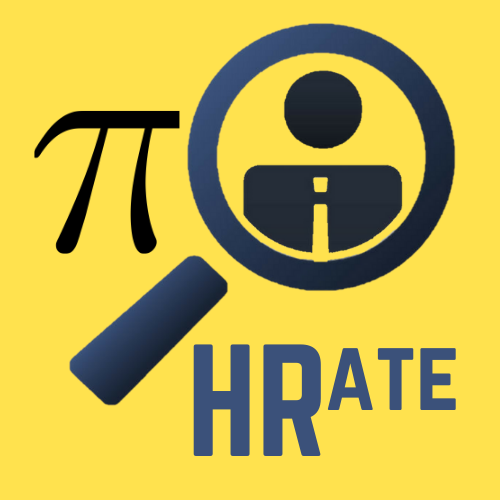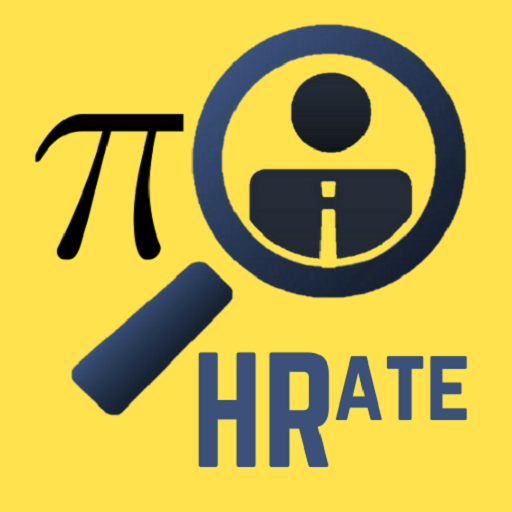From Conflict to Collaboration: Demonstrating Influence in Cross-Functional Roles at Meta

Working at a company as vast and complex as Meta (formerly Facebook) means your success isn’t defined just by what you code, design, or market, but by how effectively you can get things done across organizational boundaries. If you operate in a high-leverage role, a Product Manager, a Technical Program Manager, a UX Lead, or a Strategic Partner, you spend more time navigating the matrix than sitting in your silo. These positions are inherently cross-functional collaboration roles, designed to bridge gaps between Engineering, Legal, Policy, Marketing, and Operations.
The problem? Where functions intersect, friction often follows. Different teams have different priorities, budgets, and KPIs, leading almost inevitably to friction, which can easily escalate into paralyzing conflict. The most critical skill for thriving in this environment is not formal power, but the ability to exert effective influence, practicing genuine leadership without authority.
This comprehensive guide dives deep into the mechanisms of successful cross-functional leadership at Meta. We’ll move past the glossy descriptions of teamwork and look at the practical, actionable strategies you need to transform potential conflict into powerful collaboration, securing buy-in and driving massive impact in the process. Ready to master the matrix?
I. Understanding the Meta Matrix: Why Conflict is Inevitable
At Meta, products touch billions of people, and decisions are rarely simple. The scale and complexity of the ecosystem (Facebook, Instagram, WhatsApp, Reality Labs) necessitate a deeply matrixed organization. Understanding the root causes of conflict is the first step toward effective conflict resolution.
- Misaligned Metrics (KPIs): An Engineering team might prioritize stability and code quality (minimizing technical debt), while the Product team prioritizes rapid feature release and user growth. Their metrics are fundamentally in tension, leading to necessary negotiation and potential conflict resolution.
- Resource Scarcity: Every team fights for limited resources—whether it’s funding, headcount, or access to high-demand infrastructure (like specialized ML models). When two projects need the same rare resource, you must demonstrate strong leadership without authority to negotiate a fair allocation.
- The “Speed vs. Policy” Tension: Meta famously moves fast. However, regulatory, safety, and policy teams are fundamentally structured to move deliberately. This creates a constant organizational clash that requires careful cross-functional collaboration to balance innovation with responsibility.
- Geographic and Cultural Divides: With teams spread globally, differences in time zones, primary languages, and regional cultural norms can unintentionally create communication friction, making smooth cross-functional collaboration harder to achieve.
This deep integration means that AI and automation are not confined to specific tech departments; their influence is pervasive, touching roles in marketing, finance, HR, and operations.
II. The Foundational Skill: Wielding Leadership without Authority
Influence at Meta is power, and it is entirely separate from hierarchy. If you are reliant on your title to get things done, you have already lost. True leadership without authority relies on four critical levers:
1. Establishing Expert Credibility
- Know the Data Better Than Anyone: Be the definitive source of truth for your project’s domain. When you present a recommendation, ensure it’s backed by robust internal research, A/B testing results, or market analysis. Data is the universal language of consensus at Meta.
- Deep Domain Expertise: Understand the technical constraints, policy risks, or market dynamics that affect the collaborating team. Showing that you understand their problem, not just yours, instantly increases your credibility and helps mitigate unnecessary conflict.
2. Building and Maintaining Trust (The Currency of Influence)
Trust is earned through consistent, reliable behavior. If you consistently follow through on commitments and prioritize shared organizational success over personal wins, teams will naturally follow your lead, demonstrating strong leadership without authority.
- Radical Transparency: Be upfront about risks, trade-offs, and project challenges. Hiding bad news guarantees future conflict resolution headaches.
- Giving Credit Away: When a joint project succeeds, ensure the collaborating teams get the lion’s share of the praise. This investment in their reputation will pay dividends when you need their help later.
3. Framing for Shared Success
The best way to resolve conflict is to prevent it by aligning objectives early. When presenting a proposal, frame it not in terms of what your team needs, but how the proposal helps the other team achieve their goals or Meta’s overarching mission. This is the essence of effective cross-functional collaboration.
4. Cultivating Mutuality and Reciprocity
Effective leadership without authority means you must be willing to give before you take. Help a struggling partner team with a problem unrelated to your project. By offering proactive assistance, you build up social capital, making the ask much easier when your critical initiative requires their dedicated effort. This reciprocal relationship fuels long-term cross-functional collaboration.
III. From Friction to Function: Mastering Conflict Resolution
When disagreements arise—and they will—your approach to conflict resolution is what determines whether your career stalls or accelerates. Learn to view conflict not as a roadblock, but as a critical path to better outcomes. The following steps are mandatory for effective cross-functional collaboration under stress:
A. Diagnose and De-personalize the Issue
- Separate Positions from Interests: Don’t focus on *what* they are demanding (the position, e.g., “We must delay the launch by two weeks”). Focus on *why* they are demanding it (the interest, e.g., “We need to ensure the system is GDPR compliant to mitigate regulatory risk”). Conflict resolution is achieved by addressing the underlying interest, not fighting the stated position.
- The Power of “I Understand”: Start the negotiation by summarizing the other team’s position and validating their concerns. For example: “I hear that the key constraint here is ensuring the integrity of the data pipeline for the next six quarters. If we compromise that, we jeopardize the entire platform.” This moves the conversation from argument to joint problem-solving, a critical component of cross-functional collaboration.
B. Employ Data-Driven Negotiation (No Hiding Behind Feelings)
At Meta, emotion is respected, but data dictates decisions. Effective conflict resolution requires quantifying the cost of the disagreement.
- Quantify the Trade-offs: If the Ops team wants to delay a feature, calculate the quantifiable impact of that delay (e.g., “$5 million in lost revenue,” or “30% reduction in DAU growth”). Conversely, quantify the risk of proceeding too fast (e.g., “25% chance of system outage,” or “high regulatory fine exposure”).
- Propose Three Options: Never go into a conflict resolution meeting with only one plan. Present options A, B, and C, each detailing the associated trade-offs in time, resources, and risk. Option B is often a compromise that allows both teams to achieve most of their core interests, facilitated by your leadership without authority.
C. When to Escalate (And How to Do It Right)
Escalation should be a last resort, but knowing when and how to escalate is a hallmark of senior leadership without authority. Never escalate to complain; escalate to gain clarity on trade-offs that only a higher-level executive can approve.
- Document Everything: Before escalating, ensure you have documented the joint problem, the interests of both sides, the options considered, and why the teams could not align.
- Joint Escalation: The most respectful escalation is often done jointly with the conflicting team lead (if possible), demonstrating that the issue is systemic, not personal.
- Focus on the Organizational Win: The escalation document should explicitly state what Meta gains or loses by choosing one path over the other, keeping the focus on mission and effective cross-functional collaboration.
IV. Proactive Collaboration Systems: Designing for Success
The best influence strategies are built into your processes. Don’t wait for conflict; design systems that enable smooth cross-functional collaboration from the start.
1. The Pre-Meeting Alignment Culture
Never bring a contentious issue to a large group meeting cold. Senior professionals secure alignment 1:1 before the group meets. If you need approval from three separate teams, meet individually with their key decision-makers first. This allows you to understand potential friction points privately, incorporating feedback into your final proposal before the public meeting, thereby maximizing your influence.
2. Centralized Artifacts of Truth
Conflicting teams often work off outdated or differing requirements documents. Establish one “source of truth”—whether it’s a T-doc, a requirements doc, or a specific dashboard. Ensure all decisions, dependencies, and owners are housed in this single artifact. This system acts as a decentralized form of leadership without authority because the process dictates the direction, not just personalities.
3. The RACI Model (or Alternatives)
Before any major initiative begins, clarify roles using a framework like RACI (Responsible, Accountable, Consulted, Informed). In cross-functional collaboration at Meta, ambiguity breeds resentment. Make it explicit who holds the final decision-making power (A), who is doing the work (R), and who needs to review (C). Clear role definition is the simplest way to preempt structural conflict.
4. “The North Star” Document
Every major project needs a highly visible, succinct document defining the ultimate goal that transcends individual team metrics. When a conflict arises, redirect the conversation back to the North Star. Ask, “Which decision gets us closer to our shared 5-year goal of X?” This technique of redirection is a powerful use of leadership without authority to keep teams focused on the larger organizational mission.
V. Demonstrating Impact: Showcasing Influence in Reviews
In high-stakes performance reviews at Meta, it’s not enough to say you collaborated; you must quantify your influence. Since you don’t directly own the results of the collaborating team, how do you prove your impact?
1. Quantify the Velocity Gain (Process Improvement)
Focus on how your intervention improved the speed or efficiency of cross-functional collaboration. Example: “By implementing a standardized T-doc review process across Policy and Product, I reduced the average time-to-alignment on critical safety features from 14 days to 5 days, accelerating the launch of Project X by one month.”
2. Documented Conflict Resolution Successes
Explicitly detail instances of major conflict resolution you led. Instead of saying, “I helped resolve a fight between teams,” say: “I mediated a critical resource allocation dispute between the Data Science and Infrastructure teams, preventing a potential 3-week delay by facilitating a compromise that reduced DS compute needs by 40% while ensuring Infra stability goals were met.” This clearly demonstrates leadership without authority.
3. The Endorsement from the External Partner
Request specific, detailed feedback (peer reviews/testimonials) from the cross-functional partners you influenced. A quote like, “Her guidance allowed our team to see the policy constraints not as limitations, but as design features, directly resulting in a 10% reduction in regulatory risk,” is pure gold for showcasing your influence.
4. Impact on Organizational Health
Did your efforts improve the relationship between two traditionally antagonistic teams? Did you help transition a partnership from transactional to strategic? Document these long-term organizational health improvements driven by your successful cross-functional collaboration.
Conclusion: The Architect of Alignment
In a hyper-complex environment like Meta, succeeding in a cross-functional role requires a fundamental mindset shift. You are not just a manager of tasks; you are an architect of alignment. You must move past simply avoiding conflict and instead embrace it as an opportunity to reinforce shared goals and demonstrate your critical leadership without authority.
Mastering cross-functional collaboration means relentlessly building trust, speaking the language of data, and framing every decision around Meta’s mission. By consistently applying these principles, you will not only navigate the complexity of the Meta matrix but will become one of the most highly valued and influential leaders in the organization, regardless of your official title.



